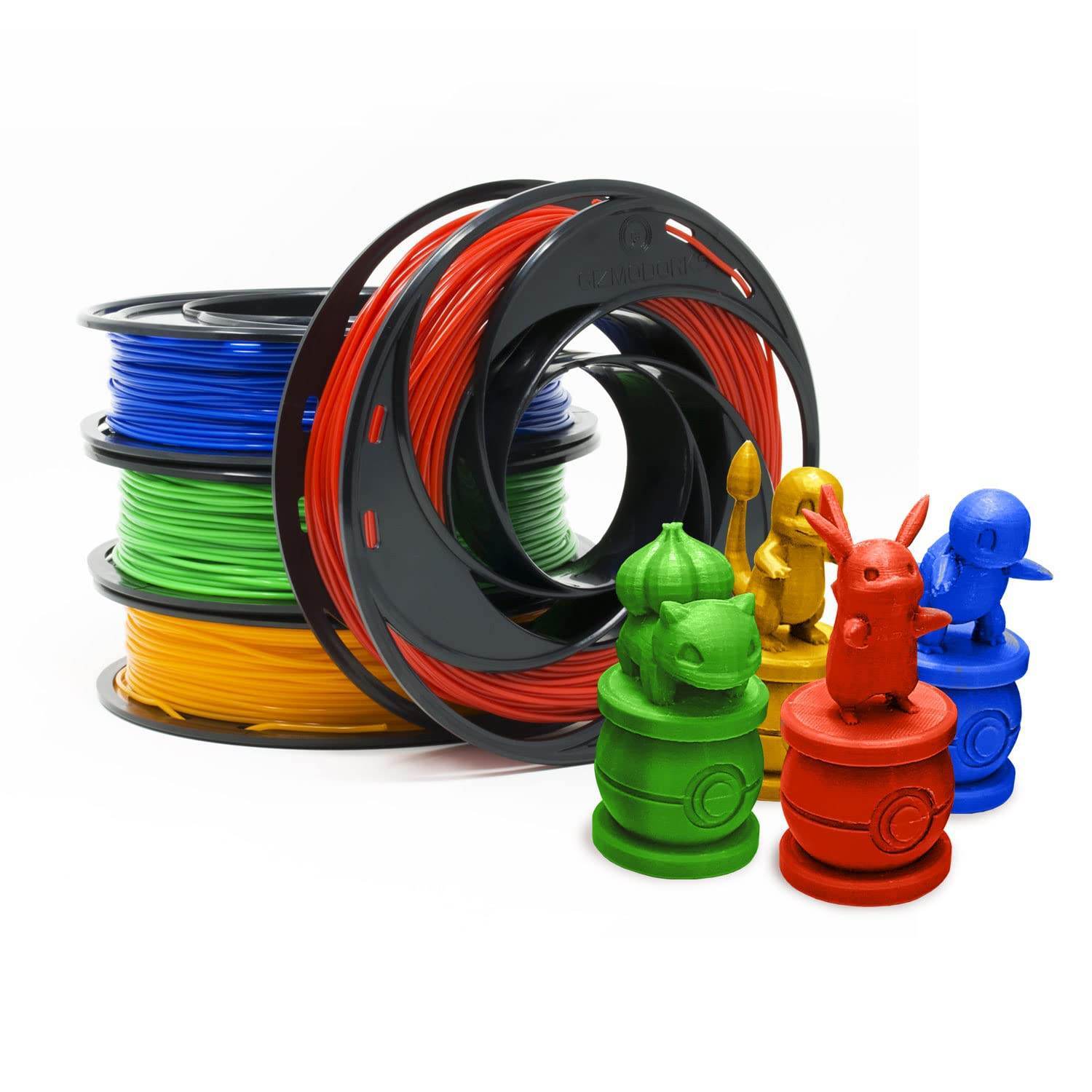3D printing filaments are the materials used in Fused Deposition Modeling (FDM) 3D printers to create objects. Here is a list of common 3D printing filaments and their uses:
-
PLA (Polylactic Acid): A biodegradable, plant-based filament that is easy to print and produces high-quality, detailed prints. It is commonly used for creating toys, figurines, and other objects that do not require high heat resistance.
-
ABS (Acrylonitrile Butadiene Styrene): A tough, impact-resistant filament that is commonly used for creating functional parts, such as phone cases and automotive parts. ABS can be more challenging to print than PLA, but it is stronger and more durable.
-
PET (Polyethylene Terephthalate): A lightweight, transparent filament that is food-safe and commonly used for creating water bottles and food containers.
-
Nylon: A strong, flexible filament that is commonly used for creating gears, bushings, and other mechanical parts that require high strength and flexibility.
-
TPU (Thermoplastic Polyurethane): A flexible, rubber-like filament that is commonly used for creating phone cases, toys, and other objects that require flexibility and elasticity.
-
PETG (Glycol-modified PET): A durable, flexible filament that is similar to PET, but with improved impact resistance and flexibility. It is commonly used for creating food containers and consumer products.
-
PP (Polypropylene): A strong, lightweight filament that is commonly used for creating household items, such as storage containers and household goods.
-
PC (Polycarbonate): A strong, heat-resistant filament that is commonly used for creating consumer electronics, such as laptop cases and gaming console parts.
-
PVA (Polyvinyl Alcohol): A water-soluble filament that is used as a support material for complex prints. Once the print is complete, the PVA support material can be dissolved in water, leaving only the desired object.
This list is not exhaustive, as new filaments are being developed and introduced all the time. When choosing a filament, consider factors such as ease of use, cost, durability, and the specific requirements of your project.

